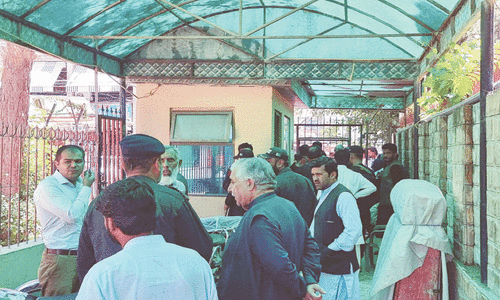Scientists have reconstructed the entire genetic makeup of a girl who lived and died in a Siberian cave more than 50,000 years ago. The young woman belonged to a long extinct group of humans called Denisovans, their existence known only from meagre fossil remains uncovered at the Denisova cave in the Altai mountains in 2008.
They are thought to have occupied much of Asia tens of thousands of years ago. Previous tests on the remains found they were more closely related to Neanderthals than modern humans.
Writing in the journal Science, researchers in the US and Germany describe how they sequenced the girl's genome with an accuracy that was once considered impossible with such ancient specimens. The final sequence matched the quality of modern genetic tests on living people.
They sequenced single strands of DNA taken from a little finger bone found at the scene. The bone fragment, and two fossilised teeth, are the only remains of the Denisovans.
Studies on the girl's genes suggest she had dark skin, brown hair and brown eyes, but other genetic factors help shed light on the Denisovans more broadly. Comparison of genetic material inherited separately from the girl's mother and father points to a population with very low genetic diversity, probably a consequence of the Denisovans starting off as a small group of pioneers and expanding rapidly.
Svante Paabo, at the Max Planck Institute for Evolutionary Anthropology in Leipzig, said there was now “no difference in what we can learn genetically about a person that lived 50,000 years ago and from a person today, provided that we have well-enough preserved bones”.
The team from Leipzig and Harvard Medical School in Boston compared the Denisovan genome with similar sequences from Neanderthals and 11 modern humans from around the world. This revealed evidence for inbreeding, with Denisovan DNA living on in some populations alive today.
“It's clear that Denisovan material has contributed 3-5 per cent of the genomes of people in Australia and New Guinea and aboriginal people from the Philippines, and some of the islands nearby,” said David Reich, a Harvard geneticist who worked on the study. The research highlighted scores of gene variants that are found in modern humans but not in Denisovans. Eight mutations that have arisen since our ancestors split from Denisovans are involved in brain function and nerve connectivity, for example.
“This is perhaps, in the long term for me, the most fascinating thing about this: what it will tell us in the future about what makes us special in the world, relative to the Denisovans and Neanderthals,” said Paabo.
Another 34 mutations found only in modern humans are associated with diseases, including four that affect the skin and eyes.
By arrangement with the Guardian










































Dear visitor, the comments section is undergoing an overhaul and will return soon.